MGMT20128 Innovation and Sustainable Business Development: Models
VerifiedAdded on 2023/05/23
|6
|981
|200
Report
AI Summary
This report provides an overview of business models, their evolution, and their impact on innovation and sustainable business development. It discusses the notion of e-business archetypes, business models as activity systems, and business models as cost-revenue architectures. The report also examines how changes in the business context, particularly the rise of big data, are impacting organizational business models, referencing the four Vs of big data (volume, variety, velocity, and veracity) and providing the example of mobile manufacturing company Oppo. Location-based services and proactive customer care are highlighted as areas where big data and analytics are driving change. The document concludes with a list of references used in the analysis.
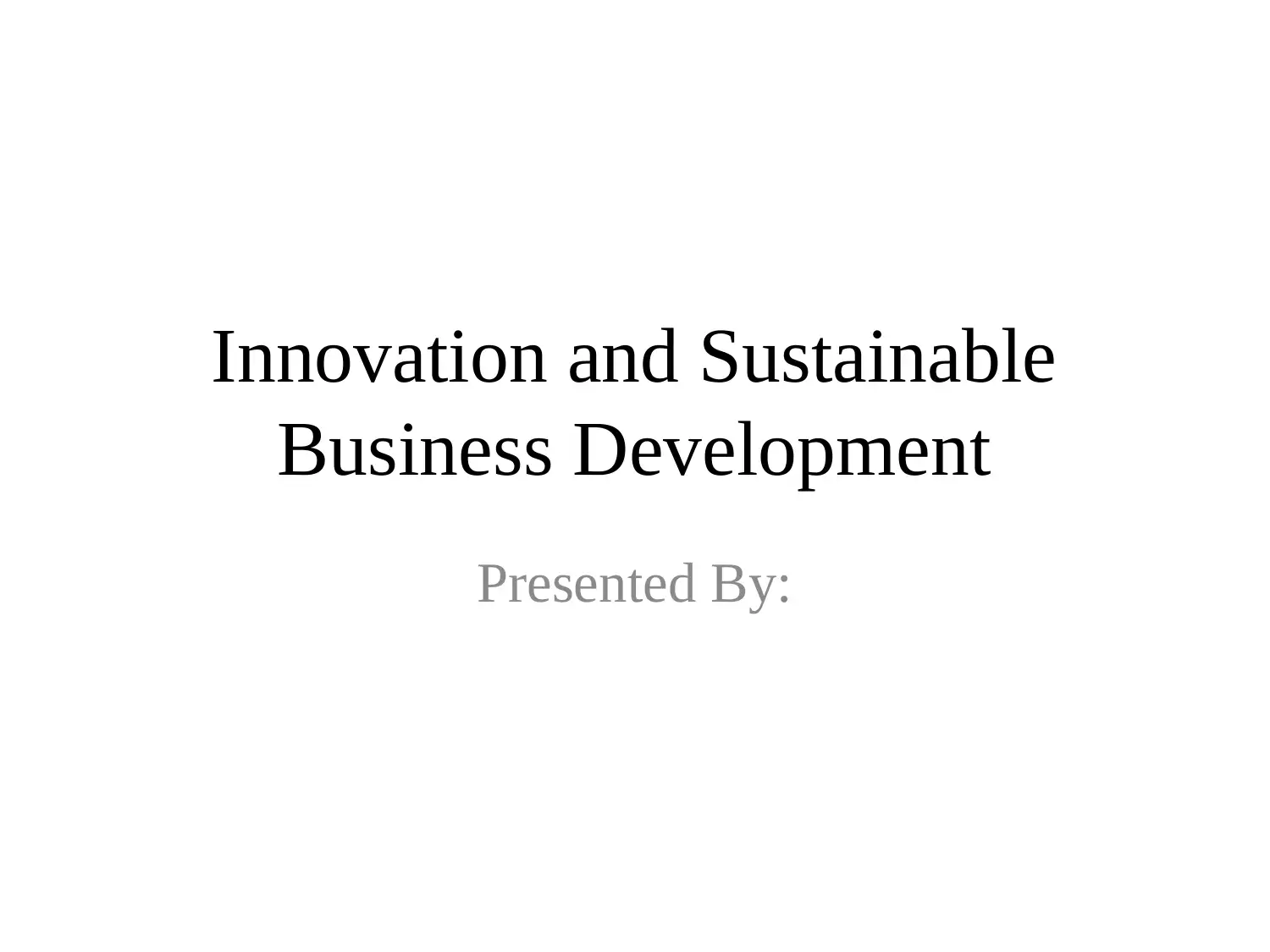
Innovation and Sustainable
Business Development
Presented By:
Business Development
Presented By:
Paraphrase This Document
Need a fresh take? Get an instant paraphrase of this document with our AI Paraphraser
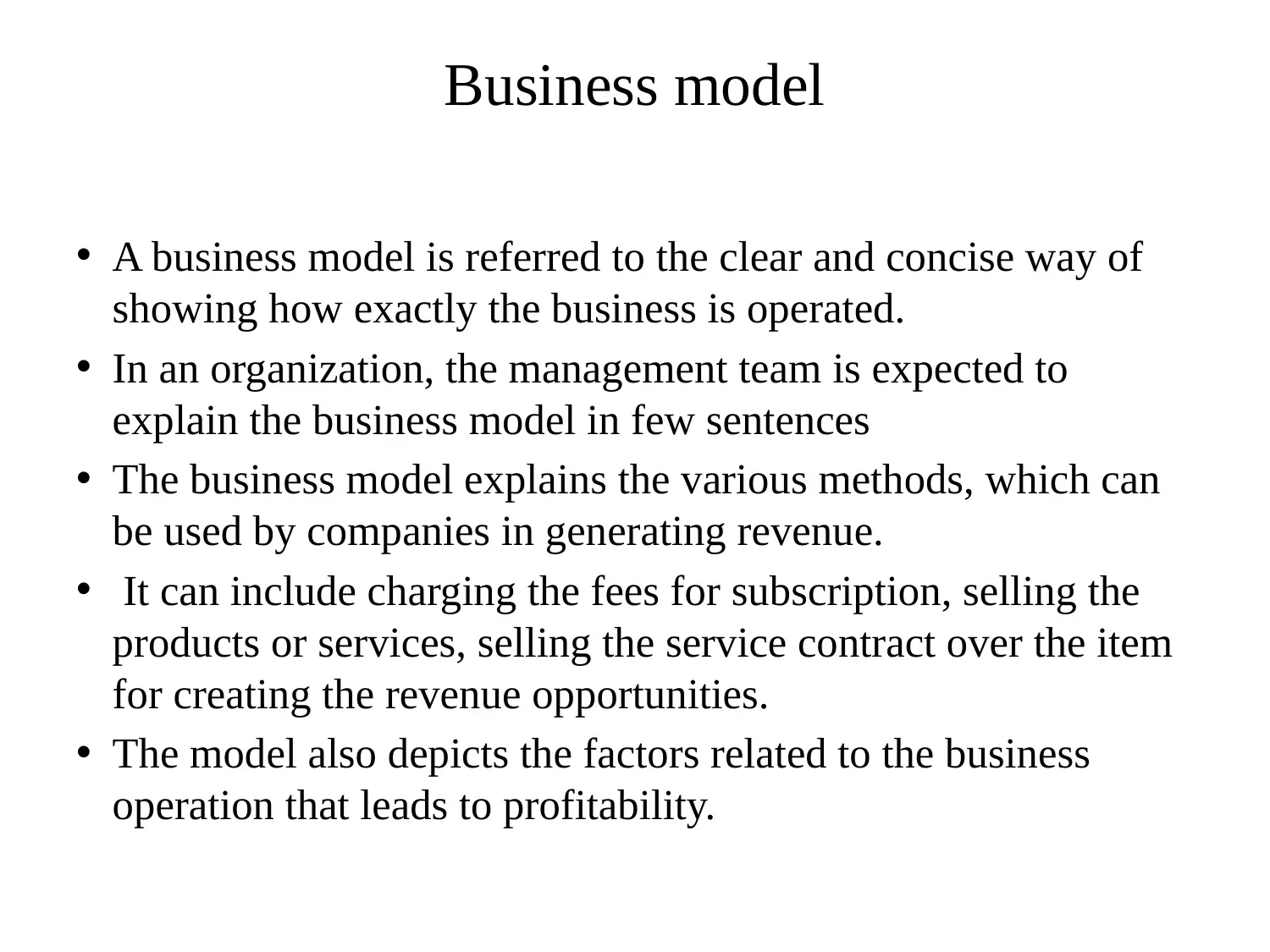
Business model
• A business model is referred to the clear and concise way of
showing how exactly the business is operated.
• In an organization, the management team is expected to
explain the business model in few sentences
• The business model explains the various methods, which can
be used by companies in generating revenue.
• It can include charging the fees for subscription, selling the
products or services, selling the service contract over the item
for creating the revenue opportunities.
• The model also depicts the factors related to the business
operation that leads to profitability.
• A business model is referred to the clear and concise way of
showing how exactly the business is operated.
• In an organization, the management team is expected to
explain the business model in few sentences
• The business model explains the various methods, which can
be used by companies in generating revenue.
• It can include charging the fees for subscription, selling the
products or services, selling the service contract over the item
for creating the revenue opportunities.
• The model also depicts the factors related to the business
operation that leads to profitability.
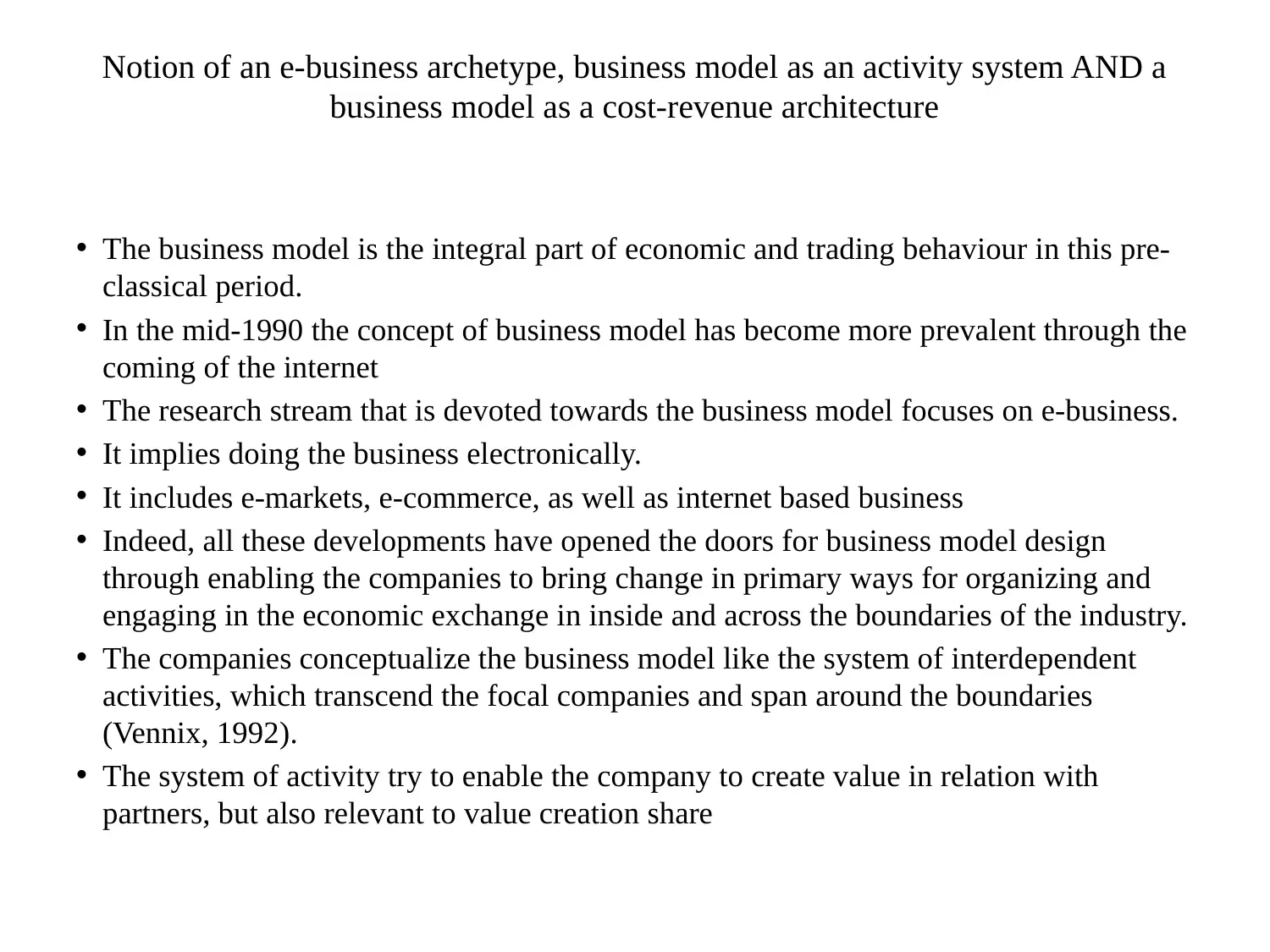
Notion of an e-business archetype, business model as an activity system AND a
business model as a cost-revenue architecture
• The business model is the integral part of economic and trading behaviour in this pre-
classical period.
• In the mid-1990 the concept of business model has become more prevalent through the
coming of the internet
• The research stream that is devoted towards the business model focuses on e-business.
• It implies doing the business electronically.
• It includes e-markets, e-commerce, as well as internet based business
• Indeed, all these developments have opened the doors for business model design
through enabling the companies to bring change in primary ways for organizing and
engaging in the economic exchange in inside and across the boundaries of the industry.
• The companies conceptualize the business model like the system of interdependent
activities, which transcend the focal companies and span around the boundaries
(Vennix, 1992).
• The system of activity try to enable the company to create value in relation with
partners, but also relevant to value creation share
business model as a cost-revenue architecture
• The business model is the integral part of economic and trading behaviour in this pre-
classical period.
• In the mid-1990 the concept of business model has become more prevalent through the
coming of the internet
• The research stream that is devoted towards the business model focuses on e-business.
• It implies doing the business electronically.
• It includes e-markets, e-commerce, as well as internet based business
• Indeed, all these developments have opened the doors for business model design
through enabling the companies to bring change in primary ways for organizing and
engaging in the economic exchange in inside and across the boundaries of the industry.
• The companies conceptualize the business model like the system of interdependent
activities, which transcend the focal companies and span around the boundaries
(Vennix, 1992).
• The system of activity try to enable the company to create value in relation with
partners, but also relevant to value creation share
⊘ This is a preview!⊘
Do you want full access?
Subscribe today to unlock all pages.

Trusted by 1+ million students worldwide
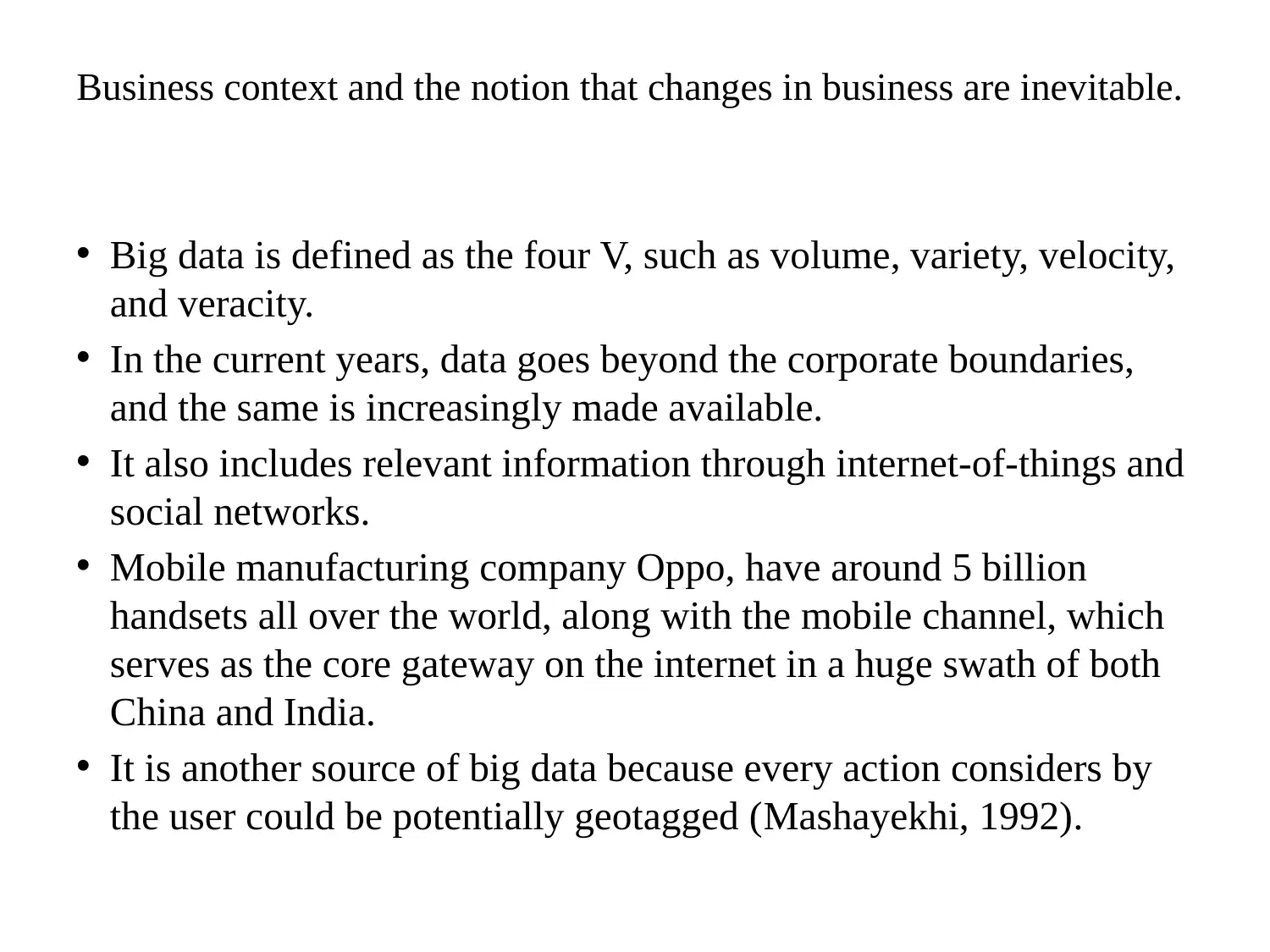
Business context and the notion that changes in business are inevitable.
• Big data is defined as the four V, such as volume, variety, velocity,
and veracity.
• In the current years, data goes beyond the corporate boundaries,
and the same is increasingly made available.
• It also includes relevant information through internet-of-things and
social networks.
• Mobile manufacturing company Oppo, have around 5 billion
handsets all over the world, along with the mobile channel, which
serves as the core gateway on the internet in a huge swath of both
China and India.
• It is another source of big data because every action considers by
the user could be potentially geotagged (Mashayekhi, 1992).
• Big data is defined as the four V, such as volume, variety, velocity,
and veracity.
• In the current years, data goes beyond the corporate boundaries,
and the same is increasingly made available.
• It also includes relevant information through internet-of-things and
social networks.
• Mobile manufacturing company Oppo, have around 5 billion
handsets all over the world, along with the mobile channel, which
serves as the core gateway on the internet in a huge swath of both
China and India.
• It is another source of big data because every action considers by
the user could be potentially geotagged (Mashayekhi, 1992).
Paraphrase This Document
Need a fresh take? Get an instant paraphrase of this document with our AI Paraphraser
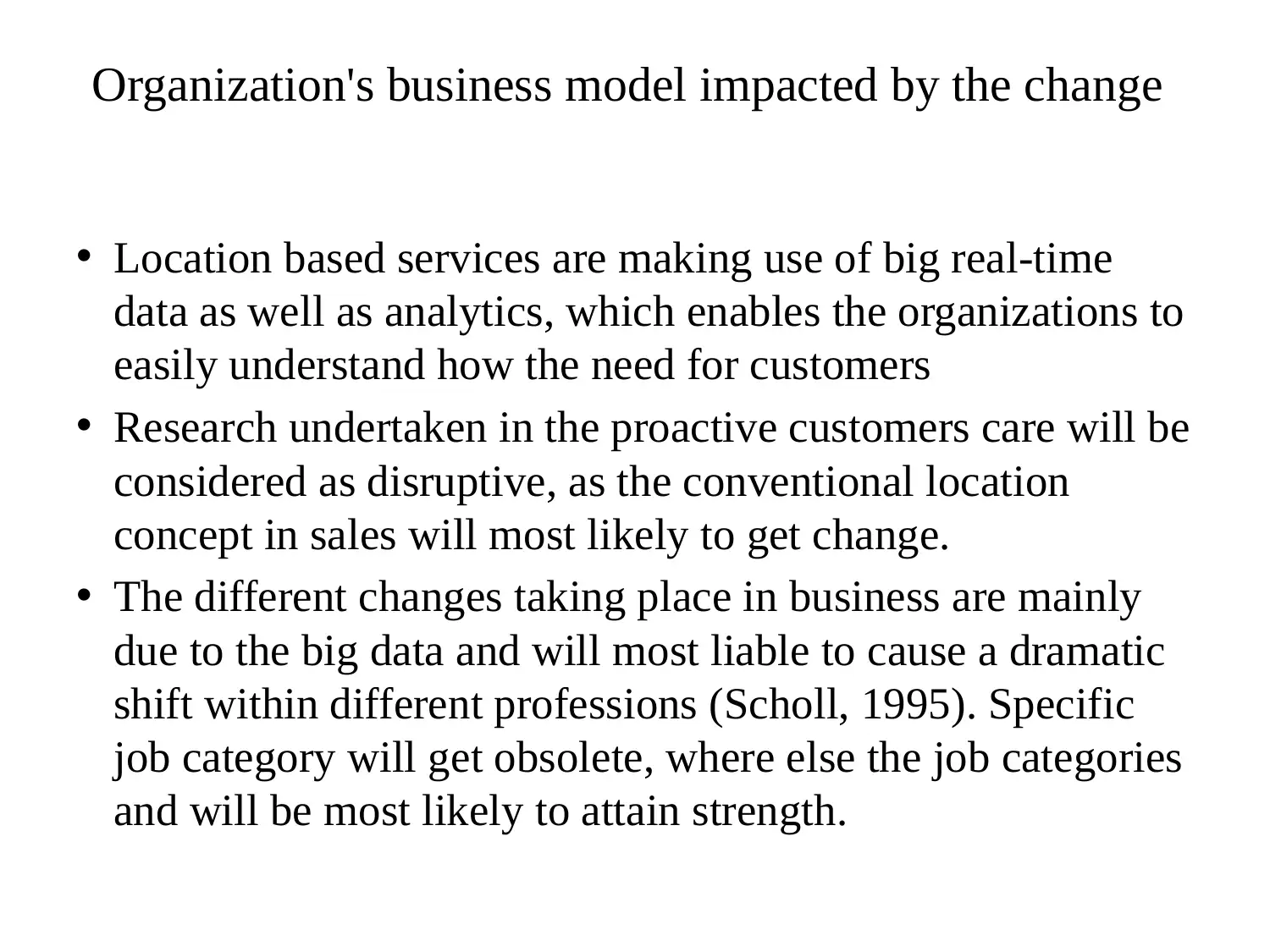
Organization's business model impacted by the change
• Location based services are making use of big real-time
data as well as analytics, which enables the organizations to
easily understand how the need for customers
• Research undertaken in the proactive customers care will be
considered as disruptive, as the conventional location
concept in sales will most likely to get change.
• The different changes taking place in business are mainly
due to the big data and will most liable to cause a dramatic
shift within different professions (Scholl, 1995). Specific
job category will get obsolete, where else the job categories
and will be most likely to attain strength.
• Location based services are making use of big real-time
data as well as analytics, which enables the organizations to
easily understand how the need for customers
• Research undertaken in the proactive customers care will be
considered as disruptive, as the conventional location
concept in sales will most likely to get change.
• The different changes taking place in business are mainly
due to the big data and will most liable to cause a dramatic
shift within different professions (Scholl, 1995). Specific
job category will get obsolete, where else the job categories
and will be most likely to attain strength.
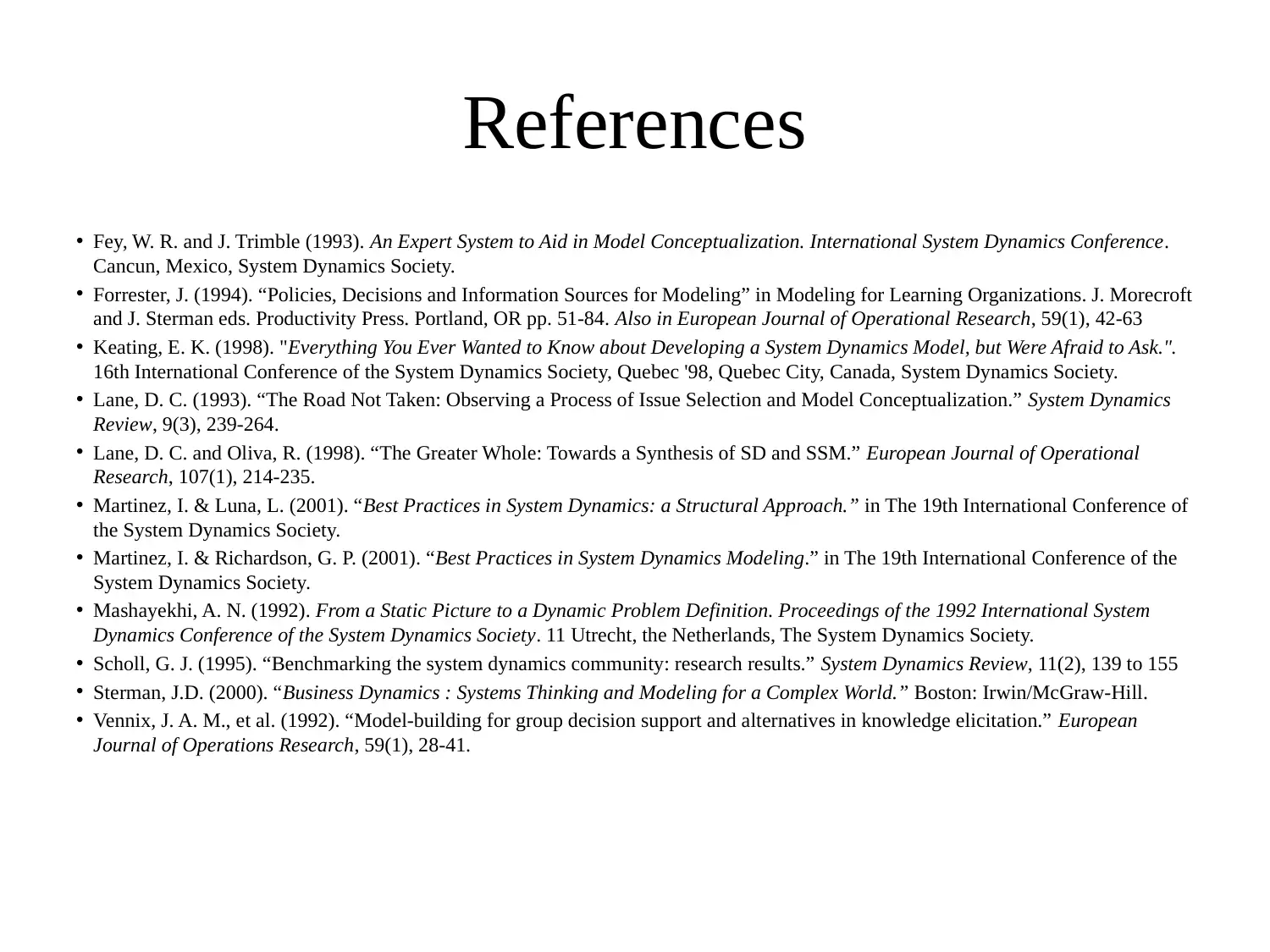
References
• Fey, W. R. and J. Trimble (1993). An Expert System to Aid in Model Conceptualization. International System Dynamics Conference.
Cancun, Mexico, System Dynamics Society.
• Forrester, J. (1994). “Policies, Decisions and Information Sources for Modeling” in Modeling for Learning Organizations. J. Morecroft
and J. Sterman eds. Productivity Press. Portland, OR pp. 51-84. Also in European Journal of Operational Research, 59(1), 42-63
• Keating, E. K. (1998). "Everything You Ever Wanted to Know about Developing a System Dynamics Model, but Were Afraid to Ask.".
16th International Conference of the System Dynamics Society, Quebec '98, Quebec City, Canada, System Dynamics Society.
• Lane, D. C. (1993). “The Road Not Taken: Observing a Process of Issue Selection and Model Conceptualization.” System Dynamics
Review, 9(3), 239-264.
• Lane, D. C. and Oliva, R. (1998). “The Greater Whole: Towards a Synthesis of SD and SSM.” European Journal of Operational
Research, 107(1), 214-235.
• Martinez, I. & Luna, L. (2001). “Best Practices in System Dynamics: a Structural Approach.” in The 19th International Conference of
the System Dynamics Society.
• Martinez, I. & Richardson, G. P. (2001). “Best Practices in System Dynamics Modeling.” in The 19th International Conference of the
System Dynamics Society.
• Mashayekhi, A. N. (1992). From a Static Picture to a Dynamic Problem Definition. Proceedings of the 1992 International System
Dynamics Conference of the System Dynamics Society. 11 Utrecht, the Netherlands, The System Dynamics Society.
• Scholl, G. J. (1995). “Benchmarking the system dynamics community: research results.” System Dynamics Review, 11(2), 139 to 155
• Sterman, J.D. (2000). “Business Dynamics : Systems Thinking and Modeling for a Complex World.” Boston: Irwin/McGraw-Hill.
• Vennix, J. A. M., et al. (1992). “Model-building for group decision support and alternatives in knowledge elicitation.” European
Journal of Operations Research, 59(1), 28-41.
• Fey, W. R. and J. Trimble (1993). An Expert System to Aid in Model Conceptualization. International System Dynamics Conference.
Cancun, Mexico, System Dynamics Society.
• Forrester, J. (1994). “Policies, Decisions and Information Sources for Modeling” in Modeling for Learning Organizations. J. Morecroft
and J. Sterman eds. Productivity Press. Portland, OR pp. 51-84. Also in European Journal of Operational Research, 59(1), 42-63
• Keating, E. K. (1998). "Everything You Ever Wanted to Know about Developing a System Dynamics Model, but Were Afraid to Ask.".
16th International Conference of the System Dynamics Society, Quebec '98, Quebec City, Canada, System Dynamics Society.
• Lane, D. C. (1993). “The Road Not Taken: Observing a Process of Issue Selection and Model Conceptualization.” System Dynamics
Review, 9(3), 239-264.
• Lane, D. C. and Oliva, R. (1998). “The Greater Whole: Towards a Synthesis of SD and SSM.” European Journal of Operational
Research, 107(1), 214-235.
• Martinez, I. & Luna, L. (2001). “Best Practices in System Dynamics: a Structural Approach.” in The 19th International Conference of
the System Dynamics Society.
• Martinez, I. & Richardson, G. P. (2001). “Best Practices in System Dynamics Modeling.” in The 19th International Conference of the
System Dynamics Society.
• Mashayekhi, A. N. (1992). From a Static Picture to a Dynamic Problem Definition. Proceedings of the 1992 International System
Dynamics Conference of the System Dynamics Society. 11 Utrecht, the Netherlands, The System Dynamics Society.
• Scholl, G. J. (1995). “Benchmarking the system dynamics community: research results.” System Dynamics Review, 11(2), 139 to 155
• Sterman, J.D. (2000). “Business Dynamics : Systems Thinking and Modeling for a Complex World.” Boston: Irwin/McGraw-Hill.
• Vennix, J. A. M., et al. (1992). “Model-building for group decision support and alternatives in knowledge elicitation.” European
Journal of Operations Research, 59(1), 28-41.
⊘ This is a preview!⊘
Do you want full access?
Subscribe today to unlock all pages.

Trusted by 1+ million students worldwide
1 out of 6
Related Documents
Your All-in-One AI-Powered Toolkit for Academic Success.
+13062052269
info@desklib.com
Available 24*7 on WhatsApp / Email
![[object Object]](/_next/static/media/star-bottom.7253800d.svg)
Unlock your academic potential
Copyright © 2020–2025 A2Z Services. All Rights Reserved. Developed and managed by ZUCOL.





